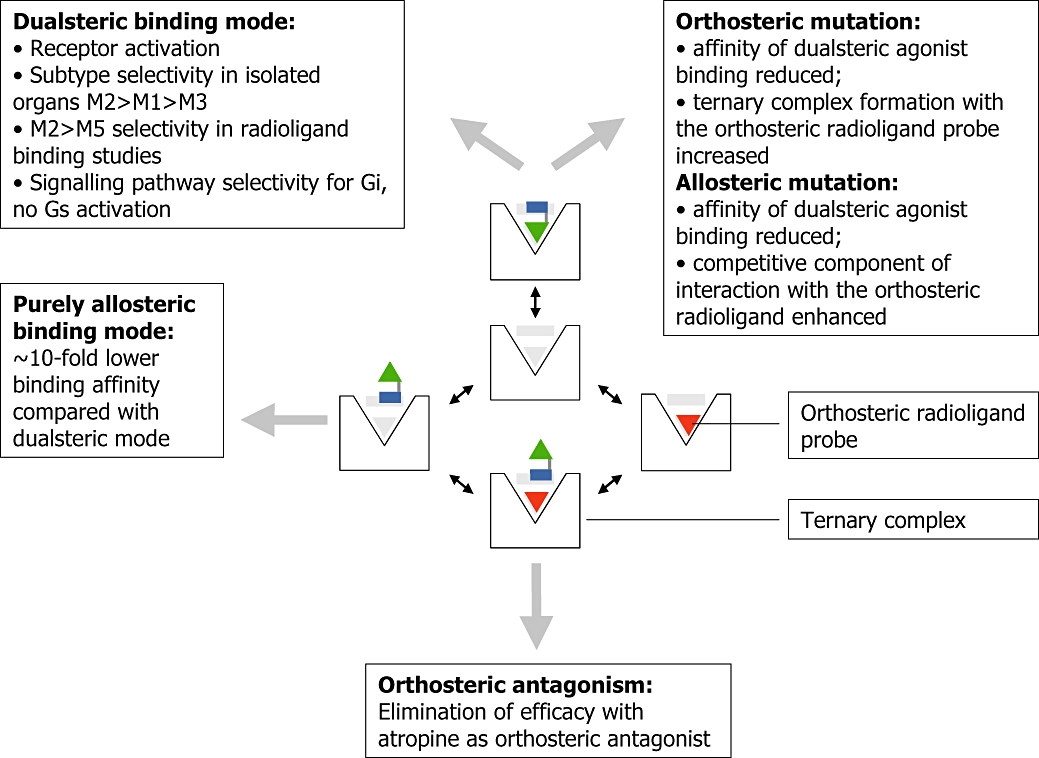Figure 4.

Binding modes of muscarinic dualsteric agonists in the absence and presence of an orthosteric radioligand probe – related experimental evidence and functional consequences. Centre: a symbolized muscarinic receptor contains in its binding cavity the inner orthosteric and the outer allosteric binding region (grey shaded). The dualsteric ligand such as compound 1d (Figure 3) consists of an orthosteric agonist building block (green triangle) which is connected by a linker with an allosteric building block (blue rectangle); orthosteric probe: red triangle. Boxes, right and bottom: experimental evidence for dualsteric binding arising from radioligand binding assays in wild-type and point-mutated human M2 muscarinic receptors (right box) and from G protein-activation experiments ([35S]GTPγS-assay, bottom box). Boxes, left: functional consequences related to dualsteric binding arising from radioligand binding assays, G protein-activation assays, label-free signalling pathway analysis by dynamic mass redistribution and organ-bath experiments. For details see Antony et al. (2009) and Kebig et al. (2009).
